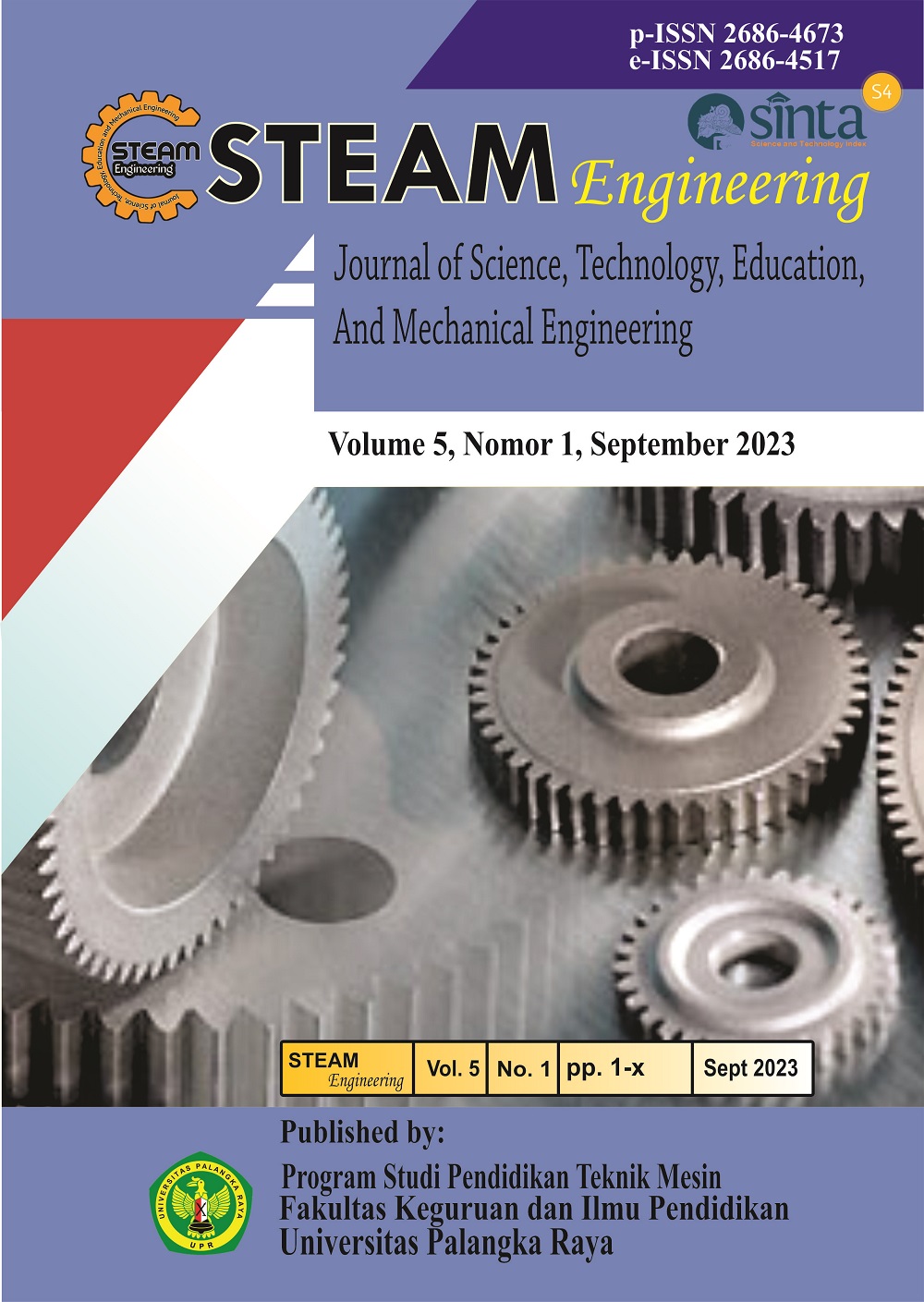OPTIMASI ENERGI PADA CLINKER GRATE COOLER DI INDUSTRI SEMEN
DOI:
https://doi.org/10.37304/jptm.v5i1.10678Keywords:
Control Flow Grate, Clinker cooler, Efficiency, Grate plate, Reduced Fall ThroughAbstract
The clinker cooling process within the cement cooler is a highly significant aspect of cement production. It not only impacts the quality of clinker but also plays a role in heat recovery to reduce fuel consumption in the kiln and preheater. In the cement industry, energy usage is divided into 78% electricity and 22% thermal energy, with almost all thermal energy consumption occurring during the clinker production process (preheater, kiln, and cooler). The performance of the clinker cooler is indicated by the value of the recovery efficiency under existing conditions, which is 69.3%, falling below the standard range of 70-75%. Energy conservation efforts in the cement industry involve utilizing the heat generated from the clinker cooling process as a supply of combustion air for the kiln and preheater. The Reduced Fall Through (RFT) type grate plate system with compartments is unable to properly control the flow of cooling air from the cooling fan to the clinker bed surface. To optimize the cooling process and heat recovery, a redesign of the clinker cooler is carried out by replacing the RFT type grate plate with a Control Flow Grate (CFG) type in compartments five, located in rows 43 to 48. Simulations are employed to support this analysis and design, utilizing ANSYS 18.2. The goal of these simulations is to assess airflow parameters and heat transfer. The clinker cooler recovery efficiency under existing conditions is 69.3%. However, following the technological design process, the efficiency performance increases to 72.9%.
Downloads
References
Ahamed, J. U., Madlool, N. A., Saidur, R., Shahinuddin, M. I., Kamyar, A., & Masjuki, H. H. (2012). Assessment of energy and exergy efficiencies of a grate clinker cooling system through the optimization of its operational parameters. Energy, 46(1), 664–674. https://doi.org/10.1016/j.energy.2012.06.074
Alsop, P. A. 2005. Cement Plant Operation Handbook for Dry Process Plant. 4th edition. Tradeship Publication, Ltd.
Bejan, Adrian. 1987. Convection Heat Transfer. New York : Mc. Graw Hill Book Company.
Duda, Walter H. 1985. “Cement Data Book” Vol 1 3rd Edition. Bauverlag GmbH. Berlin.
Geng, Y., Wang, X., & Jiang, P. (2020). Prediction of the Cement Grate Cooler Pressure in the Cooling Process Based on a Multi-Model Fusion Neural Network. IEEE Access, 8, 115028–115040. https://doi.org/10.1109/ACCESS.2020.3002768
Hongyi, W., Kun, Z., Xinjun, Z., Limei, S., & Feng, D. (2021). Multi-objective optimization design of cement grate cooler control system based on improved long short-term memory network. Transactions of the Institute of Measurement and Control, 43(15), 3399–3412. https://doi.org/10.1177/01423312211023017
Holman, J.P. 1978. Perpindahan Kalor. Terjemahan oleh E. Jasjfi. 1984. Jakarta : Erlangga.
Joseph, S. O., Dahunsi, O. A., Idowu, E. T., Aremu, A. M., Akintunde, D. O., Swanru, Y. S., & Idowu, T. E. (2022). Effect of Clinker Bed Height on Clinker Cooling Process on Clinker Grate Coolers Used in Cement Plant Ergonomic Evaluation of dynamic and post effects of vibration on earthmoving equipment operators View project Aerodynamic Optimization Using Genetic Algorithms View project Effect of Clinker Bed Height on Clinker Cooling Process on Clinker Grate Coolers Used in Cement Plant. In International organization of Scientific Research (Vol. 12). Page. www.iosrjen.org
LafargeHolcim. 2016. Reference Guide for Thermal Technology. Swiss: Holcim.
Oyepata, J. S., Akintunde, M. A., Dahunsi, O. A., Yaru, S. S., & Idowu, E. T. (2021). Modelling of clinker cooler and evaluation of its performance in clinker cooling process for cement plants. Nigerian Journal of Technology, 39(4), 1093–1099. https://doi.org/10.4314/njt.v39i4.16
Perry, K. E. 1979. “Cement Manufacturer’s Hand Book”. Chemical Publishing Co., Inc., New York.
Sanaye, S., Khakpaay, N., Chitsaz, A., Hassan Yahyanejad, M., & Zolfaghari, M. (2020). A comprehensive approach for designing, modeling and optimizing of waste heat recovery cycle and power generation system in a cement plant: A thermo-economic and environmental assessment. Energy Conversion and Management, 205. https://doi.org/10.1016/j.enconman.2019.112353
Setiyana, B. (2007). Analisis Unjuk Kerja Grate Clinker Cooler pada Proses Produksi Semen (Vol. 9).
Shao, W., Cui, Z., & Cheng, L. (2016). Multi-objective optimization design of air distribution of grate cooler by entropy generation minimization and genetic algorithm. Applied Thermal Engineering, 108, 76–83. https://doi.org/10.1016/j.applthermaleng.2016.07.088
Taweel, T. J. B., Sokolova, E., Sergeev, V., & Solovev, D. B. (2018). Energy and Exergy Analysis of Clinker Cooler in the Cement Industry. IOP Conference Series: Materials Science and Engineering, 463(3). https://doi.org/10.1088/1757-899X/463/3/032101
Wang, S., Yu, H., Lu, S., Wang, X., & Liu, H. (2020). Application of least square support vector machine with adaptive particle swarm parameter optimization in grate pressure optimization setting of grate cooler. Proceedings - 2020 35th Youth Academic Annual Conference of Chinese Association of Automation, YAC 2020, 632–637. https://doi.org/10.1109/YAC51587.2020.9337619
Zanoli, S. M., Pepe, C., & Astolfi, G. (2023). Advanced Process Control for Clinker Rotary Kiln and Grate Cooler †. Sensors, 23(5). https://doi.org/10.3390/s23052805












